Dell XPS 15 (2018) review
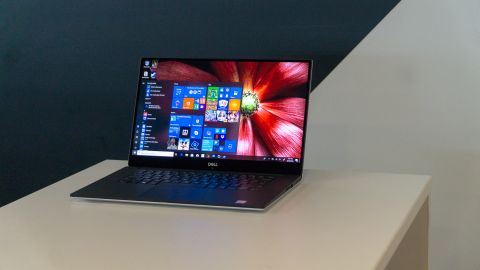
The new Dell XPS 15 for 2018 has arrived to challenge would-be usurpers to its throne of rule over ‘prosumer’ laptops. It’s more powerful than ever before, and surprisingly can last even longer on a charge.
However, very little – if anything – else about the laptop has changed since the previous model. Yes, this means that the same annoying webcam placement and poor audio performance are found in this model as before.
Dell has managed to oust much of its competition in terms of value in spite of this, especially in 4K media work, earning it a Great Value award in addition to a higher score. Here’s how, despite another whiff on the webcam, the XPS 15 manages to rise above its rivaling 15-inch laptops.
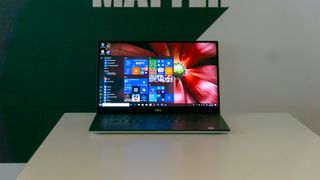
SPEC SHEET
Here is the Dell XPS 15 configuration sent to TechRadar for review:
CPU: 2.2GHz Intel Core i7-8750H (hexa-core, 9MB cache, up to 4.1GHz)
Graphics: Intel UHD Graphics 630; Nvidia GeForce GTX 1050 Ti (4GB GDDR5)
RAM: 16GB DDR4 (2,666MHz)
Screen: 15.6-inch 4K UHD (3,840 x 2,160) InfinityEdge display (anti-glare, IPS, 100% sRGB, 400 nits)
Storage: 512GB SSD (M.2 2280 PCIe)
Ports: 2 x USB 3.1, 1 x USB-C (Thunderbolt 3) w/ PowerShare, 1 x HDMI 1.4, SD card reader, headset jack
Connectivity: Killer 1535 802.11ac Wi-Fi (2x2 MIMO); Bluetooth 4.2
Camera: 0.9MP (720p) webcam
Weight: 4 pounds (1.8kg)
Size: 14.06 x 9.27 x 0.45 – 0.66 inches (357 x 235 x 11 – 17mm; W x D x H)
Graphics: Intel UHD Graphics 630; Nvidia GeForce GTX 1050 Ti (4GB GDDR5)
RAM: 16GB DDR4 (2,666MHz)
Screen: 15.6-inch 4K UHD (3,840 x 2,160) InfinityEdge display (anti-glare, IPS, 100% sRGB, 400 nits)
Storage: 512GB SSD (M.2 2280 PCIe)
Ports: 2 x USB 3.1, 1 x USB-C (Thunderbolt 3) w/ PowerShare, 1 x HDMI 1.4, SD card reader, headset jack
Connectivity: Killer 1535 802.11ac Wi-Fi (2x2 MIMO); Bluetooth 4.2
Camera: 0.9MP (720p) webcam
Weight: 4 pounds (1.8kg)
Size: 14.06 x 9.27 x 0.45 – 0.66 inches (357 x 235 x 11 – 17mm; W x D x H)
Price and availability
As configured to the right, you’ll pay a cool $2,099 (£1,869, AU$2,999) for the 2018 Dell XPS 15 with all of the power that a mainstream user needs. You can take the configuration even higher, with an Intel Core i9 processor, 32GB of memory and a 2TB SSD for a whopping $3,299 (£2,939, AU$4.499).
The Dell XPS 15 starts at a much more approachable, though still premium, $999 at the time of writing, which gets you an Intel Core i5 processor with integrated graphics, 8GB of memory and a 1TB spinning hard drive behind a Full HD (1,920 x 1,080) display. In the UK, the starting configuration comes with a 256GB SSD and Nvidia GeForce GTX 1050 graphics for £1,319. In Australia, you get a similar starting setup to the UK sans the graphics chip for AU$1,899.
Comparatively, the latest 15-inch MacBook Pro delivers a similar spec to what you see here for $2,399 (£2,349, AU$3,499) to start. This gets you the very same processor, AMD Radeon Pro 555X graphics with 4GB of video memory, 16GB of slightly slower memory and half as much SSD storage behind a screen that, while a Retina display, isn’t as sharp as the XPS 15 4K option. To match the Dell on storage, the MacBook Pro calls for $2,599 (£2,529, AU$3,819).
The Asus ZenBook Pro 15 aims to address the same audience as both of these aforementioned laptops, doing so for far less cash starting at $1,799 (about £TK, AU$TK). That price gets you a 4K touch display in addition to a secondary touchscreen in the touchpad as well as 512GB of SSD storage and 16GB of memory paired with the same graphics and processor as the Dell laptop.
All told, the XPS 15 for 2018 rests between the luxury of the MacBook Pro and the utility and power-for-price balance that Windows laptops have become known for. To wit, the XPS 15 features a fingerprint reader in its power button for biometric login via Windows Hello.
Design
Year over year, not much at all about the XPS 15 design identity has changed. The product still comes wrapped in an aluminum unibody shell with a carbon fiber keyboard deck, connected by a single, sturdy hinge.
Dell distinguishes its premium laptop design in part by the ports that the dimensions allow for it to maintain while others trudge on into USB-C domination. For instance, the XPS 15 features a full-size SD card slot, HDMI and USB 3.1 where the MacBook Pro sticks to four Thunderbolt 3 ports.
That said, the design doesn’t leave room for a number pad on its keyboard, but neither do either of the XPS 15’s listed competitors. Otherwise, the keyboard is expectedly punchy and well-spaced – just like we’ve observed on the award-winning Dell XPS 13. However, the travel is a little more shallow than we’d like on a 15-inch laptop.
The touchpad feels just fine, with its matte glass tracking surface, and produces a satisfying click when pressed. Navigating the Windows 10 interface is easy between the accurate touchpad and responsive touchscreen.

Display and audio
And, what a touchscreen it is. Our review unit came in the optional 4K UHD (3,840 x 2,160) resolution, which makes colors and textures in films and photos simply pop. Of course, this also means that the XPS 15 is more than ready to power editing of 4K media content.
While the MacBook Pro and Asus laptop can certainly power the same kind of work (and play) via a connected 4K display, the XPS 15 can handle it wherever and whenever – no additional screen needed. Better yet, the display meets 100% of the Adobe RGB color gamut.
Unfortunately, the ‘chin-cam’ returns with the Dell XPS 15: the webcam is positioned beneath the screen to make way for its mega-thin left, right and top bezels. The resolution is june fine, but the placement is just no good, and could be a deal-breaker for some.
The speakers are equally placed in a poor position considering a laptop of this size: on the base toward the lip, facing downward. They’re also awfully small given the laptop’s dimensions, though they’re surprisingly powerful. The end product may be audio lacking in depth compared to your TV or headphones, but at least it’s loud.



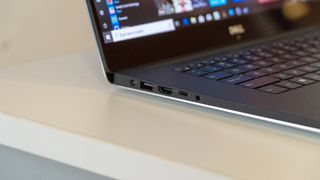
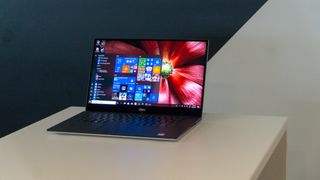
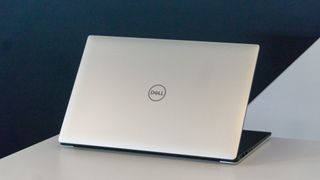

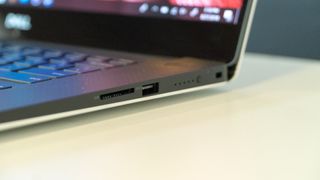
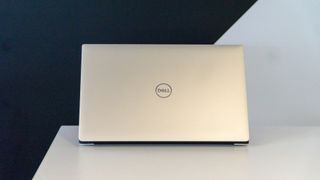
Post a Comment